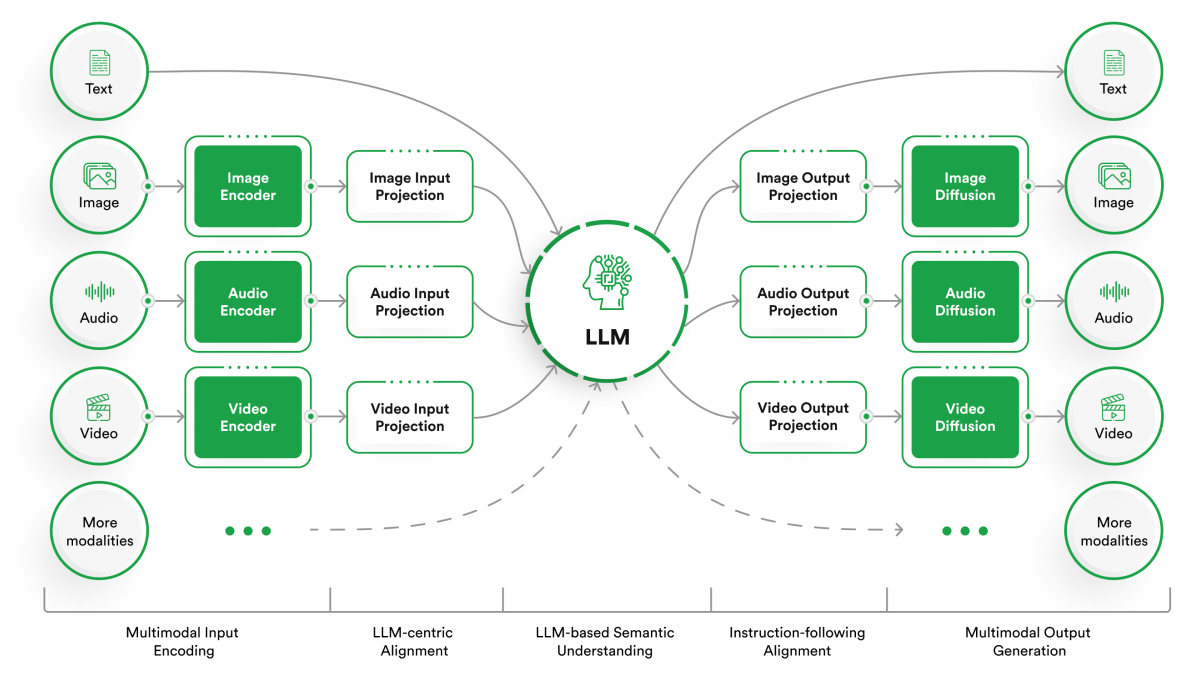Multimodal AI is transforming industries by integrating various data types to create more natural and efficient interactions. By examining specific applications and market trends, we can understand the profound impact of multimodal AI across industries and its potential to shape the future of human-computer interaction.
Education
The global AI in the education market reached $3.5 Billion in 2023, and it’s expected to reach $55.3 Billion by 2032, reflecting a significant shift towards more intelligent and responsive educational technologies. This growth is driven by the increasing demand for personalized learning experiences accommodating various learning styles and needs.
Multimodal AI is changing the way students learn and interact with educational content. By integrating speech recognition and image processing, multimodal AI facilitates more interactive and personalized learning experiences. For example, educational platforms can use AI to analyze students’ verbal responses and visual interactions to provide tailored feedback and adaptive learning paths.
Customer Service
According to statistics, the global chatbot market is projected to reach $34.6 Billion by 2032, highlighting the increasing reliance on AI-driven customer service solutions. This growth is fueled by the need for more efficient and scalable customer support systems.
In customer service, multimodal AI is enhancing the capabilities of chatbots and virtual assistants, making them more effective at understanding and responding to complex queries. Advanced NLP and speech recognition technologies enable these systems to interpret customer inputs more accurately and provide more relevant and rapid responses. For instance, a multimodal AI-powered customer service bot can handle text-based queries, interpret voice commands, and even analyze images of documents to assist with customer issues.
Healthcare
The is facing significant advancements through integrating multimodal AI, particularly in diagnostics and patient care. AI systems can analyze medical images, patient records, and voice notes to provide more accurate diagnoses and treatment plans. For instance, AI can assist radiologists in detecting anomalies in medical scans or help doctors by transcribing and analyzing patient consultations. Similarly, AI can during patient consultations by automatically transcribing the conversation in real-time and extracting key insights. NLP algorithms can parse the transcript to identify symptoms, medications, and other relevant information that can be fed into the patient’s electronic health record. This widespread adoption is driven by AI’s potential to improve diagnostic accuracy, enhance patient outcomes, and reduce healthcare costs.
Finance
In the financial industry, multimodal AI enhances security and personalizes customer interactions. Financial institutions leverage facial recognition and voice biometrics for secure customer authentication, while AI-driven analytics provide tailored financial advice based on individual data patterns.
For example, banks use AI to monitor customer transactions and detect fraudulent activities by simultaneously analyzing text, image, and voice data. Moreover, these insights enable banks to personalize their services and offer tailored fraud prevention advice to customers. AI systems can identify unique risk profiles and provide customized recommendations by analyzing customer behavior and transaction patterns. These solutions can pre-screen domestic and cross-border payments against sanction lists and high-risk countries and then use advanced analytics to monitor for anomalies continuously.
Retail
The retail sector also benefits from multimodal AI through improved customer experiences and operational efficiencies. AI systems analyze data from online interactions, in-store behaviors, and voice commands to provide personalized recommendations and streamline the shopping process. AI algorithms can analyze real-time data such as sales, returns, and inventory levels to reorder products or adjust stock allocations automatically. By automating these processes, retailers can minimize human error and ensure optimal inventory levels.
Manufacturing and Transportation
In manufacturing and transportation, multimodal AI is used for predictive maintenance and autonomous operations. AI systems analyze data from various sensors to predict equipment failures and optimize manufacturing production processes. Additionally, autonomous vehicles can leverage multimodal AI to learn driving behaviors and skills from expert human drivers. One study found that observing an AI driving coach providing different explanatory instructions can effectively teach performance driving skills to novice participants, improving their driving performance, cognitive load, confidence, and trust.







